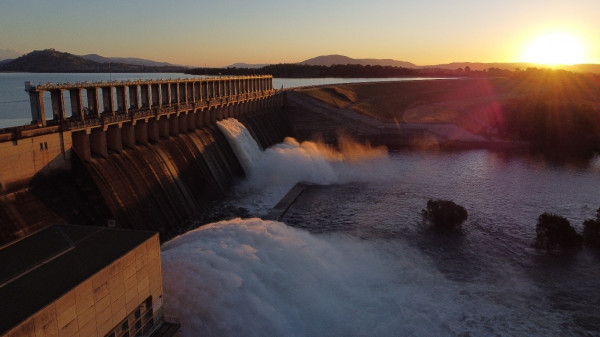THE Murray-Darling Basin Authority (MDBA) is trialling a different method of water releases from Hume Dam using the spillway gates in a bid to improve downstream water quality.
MDBA acting executive director river management Dr Andrew Kremor said dissolved oxygen levels remained low immediately downstream of the dam for several kilometres, even though the MDBA had been releasing water through the valves to increase aeration, and compressed air has been added to water releases through the power station since earlier this month.
“The very high levels of bushfire residue which entered the lake over the past few years has led to complex processes that use up a lot of the available oxygen in the lower layers of the lake,” Dr Kremor said.
“A drop in oxygen can make it difficult for fish and other aquatic animals to breathe, so we have tried valve releases to create a spray which aerates the water as it hits the river, and air has been added to releases through the power station.”
MDBA said impacts from these low dissolved oxygen levels to aquatic organisms or town drinking supplies had not been observed at this time and by actively maintaining or increasing the dissolved oxygen levels, it was hoped that this would continue to be the case.
While the valve releases to date have improved low DO levels a little, the MDBA will trial releasing a small volume of water through the spillway gates until Monday when the effectiveness of this method would be assessed.
“This trial is being considered as recent water quality monitoring has shown that dissolved oxygen levels are much better in the upper layers of the lake, compared with the lower levels where water is released through the power station and outlet valves,” Dr Kremor said.
“These spillway releases will only be during the day and the valves will be used overnight which we hope will optimise an improvement in dissolved oxygen levels.
“If successful, the MDBA may consider continuing to use the spillway to assist with improving dissolved oxygen levels.”
Another water quality issue is also affecting the lake. WaterNSW has issued a red alert for blue–green algae (BGA) for all of Hume Dam.
However, these water releases are not expected to transfer significant amounts of algae downstream as the released water was not drawn from the surface levels where the BGA was typically present during the daytime to carry out photosynthesis.
Hume is effectively full, at 99 per cent capacity.
Releases to meet downstream demand for water will overtake inflows in coming days and the storage level is starting to decline.
Since the 1960s, when Hume Dam was expanded to its current size, this is only the fourth time the dam has been above 99 per cent capacity in January. The previous occasion was 28 years ago in January 1994.







